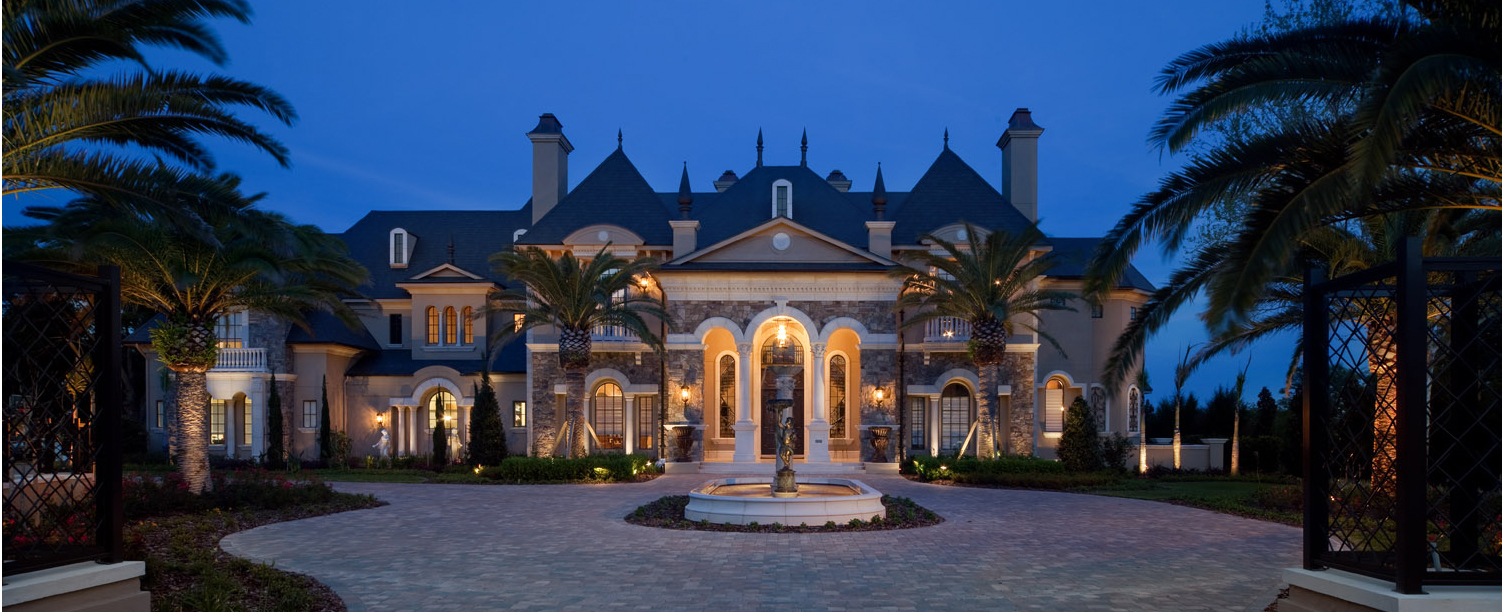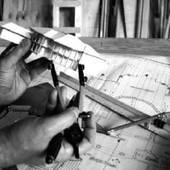Creating the Custom Luxury Home
One must seek value in any home purchase. Designing a spec house or one for you and your family is important as you keep in mind the potential for resale. Obviously the location of the house, whether in a suburb or rural area and the amenities nearby including hospitals, food stores, restaurants, retail, and entertainment complexes are basic factors.However most luxury houses do not necessarily need to be close to city services and most often are found in rural areas where more land is available to create an estate and the landscape or terrain may offer special views, clearer air, and privacy.
Buying or planning to build a home should consider the following items from an Architectural viewpoint:
A. The house should be soundly built and free of structural and environmental defects caused by poor site planning or below par construction practices. Is the house built in an area that drains properly?
B. The house should have a special curb appeal and that means does it look attractive and well proportioned? Are the placement of windows and doors within the geometry or massing of the main parts pleasing to the eye? Is the style of the house important and a best seller in your market?
C. Are there any special features that are outstanding and well integrated to the exterior? Do columns and arches, roof lines, heights of floors, colors and exterior details seem good and well connected?
D. Does the house have a special character that is a result of all of the above that makes it distinctive from other houses that are nearby?
E. When entering the house does it seem dark or dreary or are there aspects of the interiors that seem not to match the style of the exterior?
F. Are the floor to ceiling heights correct for the sizes of the rooms? Do two story rooms have a 'tunnel effect' or is the width and length of the rooms right for the height of the ceiling? Do columns and arches have enough space to frame well without interfering with other moldings?
G. Are the rooms in an order that makes sense? Does space flow well from room to room? Are drops or rises in the floor obvious or jarring?
H. Are materials used inside complementary? Do the floors join from room to room continuously or are there breaks to indicate that each room or space is individual from the other?
I. Are colors complimentary or unnerving from room to room? Should some rooms be closed from others rather than open? An 'open plan' with rooms treated in contrasting or opposing color schemes does not work as well as an open plan with slight changes of hue, saturation, and intensity.
J. Is the design of baseboards, door and window trim, paneling, wall and ceiling moldings well integrated? Do they all look like they are from the same period? Are moldings proportional to the items they frame? In a smaller room does the crown molding look too large or in a large space too small? Are there busy areas and then large blank areas of wall treatment?
K. Are cabinets and countertops well built and complementary of adjacent wall paneling? Are there any masonry, wood, or metal components that cannot be seen in any other area of the house? (for example: an all stucco house exterior including chimneys but a red brick fireplace and hearth inside would look out of place)
L. Are the interiors separated sufficiently for adults and children to live together without interfering with each other's activities in general? Are children's bedrooms too close to formal rooms?
M. Are hallways wide and tall enough for the rooms they tie together? Do views of powder rooms open to any formal rooms? Are laundries and bathrooms sufficiently isolated from view and sound from formal rooms?
N. Are fireplaces, bars, and other amenities in proper proportion to the spaces and walls they occupy?
O. Do lighting and plumbing fixtures seem period correct for the style of the architecture inside and out?

Selling the Custom Luxury Home
Buyers of luxury homes want to see quality of materials and a design that supports the money asked in the sale.
Does the exterior have a balanced look between projections and other features?
Are columns and arches designed proportionally width to height and span?
Does the interior complement the exterior concept? When entering the house you should see a similar hand in the details of the exterior.
If you furnishings are too contemporary you may wish to stage the house with more traditional furniture and accessories in order to keep the style integrated overall.
Pricing a luxury house correctly is very important. Even though adjacent properties may not be in the same league as far as quality and style you cannot base your sell price on some kind of community average. A luxury house is special and must be presented with the idea that it is much more than the number of square feet, room count, etc.
You have a design and package that is grand, beautiful and well layed out. The materials, colors, and total effect is integrated throughout. The higher end flooring, extensive moldings and casing, arches and columns, wood and stonework fireplaces and accents are worth much more than the sum of the parts.
A good Realtor should be able to create a great presentation for the house including possible fly overs and interior/exterior photography to showcase all the special aspects of your luxury house.



Comments(4)